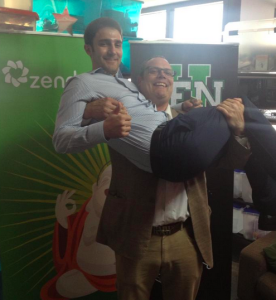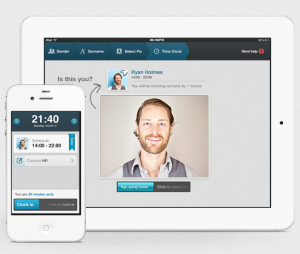This post was originally posted on TechinAsia.com, a leading Southeast technology media property. The post can be found here – 10 startup tools you need for CRM, communication, and documentation
————-
At PayrollHero we are big believers in knowledge sharing. From pair programming to private online forums for open discussions about our business to sharing online, we believe that transparency and leaving artifacts behind is the best way to succeed. So in keeping with that, I thought I would share the 10 tools that we are using today at PayrollHero.
Communication:
HipChat – We use HipChat as our water cooler. We have multiple rooms setup so that we can keep the conversations on topic. From Business Development to Developers to Customer Service, each department of our business has a room to chat in. Plus, with the iOS app and alerts, our team can stay up to speed with the progress of the business. One of the neat things about HipChat is that you can integrate with other tools so that they update the HipChat rooms. For example, in our Developers room, it is common to see messages from Bugsnag, GitHub, CodeClimate and many others. In the Customer Service room Zendesk and Intercom contacts show up. It is a great way to keep on top of your business and the different departments.
Google Hangouts – Every morning at 7:37am PHT and 3:37pm PDT most of our team gathers for our standup meeting. Because we are situated in two locations, we do our daily standup meeting via Google Hangouts. Hangouts are stable, reliable and free enabling us to keep both offices in constant contact with each other. Outside of our standup meetings Google Hangouts are commonly used for department meetings, client support calls and sales calls.
Skype -Everyone should know Skype, but we use it quite a bit as some Google products have trouble in China. Skype enables our client happiness team to speak with clients, share their screens and demo the platform. Our business development team uses it for webinars as well as sales calls. Overall it is a reliable platform that helps us grow our business.
Asana – Asana is a task tracking system built for web and mobile designed to reduce email clutter within a workplace. We use it for tracking our engineering tasks, onboarding tasks and any group projects that we are working on.
Zopim – We switched over from SnapEngage to Zopim for the live chat on all of our marketing sites recently. We made the switch based on features and pricing and found that Zopim had all the features we needed at a lower cost that what we were paying before. (Zendesk just purchased Zopim)
CRM:
PipelineDeals – We moved over to PipelineDeals (from Highrise) recently as we were looking for a change in how we managed our leads, deals, contacts and clients. PipelineDeals is a great platform for B2B businesses that want an easy to use, slick interface that does not require tons of setup time. PipelineDeals plays nicely with our MailChimp account and our team instantly loved it. Plus their customer support has been quick and helpful. (Watch for PipelineDeals pushing more into Southeast Asia)
Intercom.io -I really like Intercom and how it lets us communicate not only with our clients who require support, but all of our clients. It gives us an in-depth dashboard to all activity on our platform and makes it really easy to communicate with our clients. Their automated, action trigged messages are really helpful and have changed the way we support our clients.
Zendesk.com –Zendesk is where we manage client support requests and tickets from Intercom that require more time to resolve. We used to use Zendesk alone, but added Intercom for its complete client view and the two platforms work nicely for our client happiness team. (My guess is that Zendesk is going to either do buy Intercom or replicate some of their features in the near future. Time will tell.)
Documentation:
Google Drive – Our whole world lives in Google Drive. We store our financials, employee docs, communal spreadsheets/documents, photos, videos, memos plus much more. It is a quick and easy way to keep everything in the cloud and searchable at a moments notice.
Expensify – Expensify is how we track all receipts that need to be reimbursed. We use the iOS app to take photos of the receipt, quickly document the details around the receipt and it stores it for quick reporting.
Bonus Tools – We are also playing with a couple tools to test how they workout within our world. They include Peak (see what people are working on), DropCam (to take a peek into each office) and Ghost (for release notes, trying instead of WordPress).



